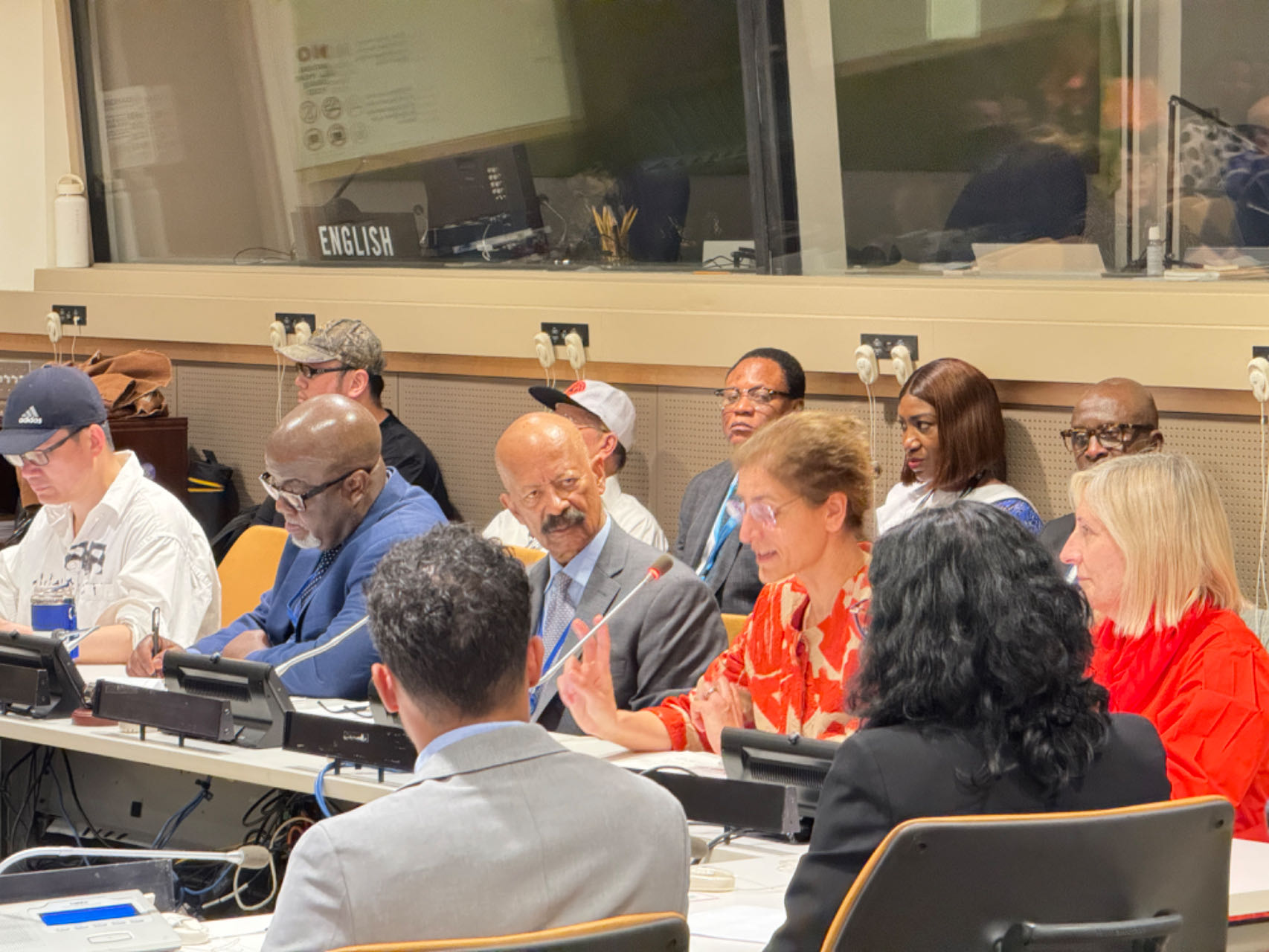
NEW YORK, May 21, 2023 – The World Day for Cultural Diversity for Dialogue and Development is celebrated annually on May 21st. On this day, UNESCO promotes intercultural dialogue and advocates for the exchange and mutual learning between different cultures.
This year, representatives from the Permanent Mission of the Republic of Sierra Leone to the United Nations, along with members of the New York art community and other distinguished guests, gathered at the UN Assembly Hall to discuss “AI (Artificial intelligence) and Arts”.
“Technological development should serve as a bridge connecting different cultures and promoting mutual understanding, not a tool creating divisions,” said H.E. Mr. Michael Imran Kamu, the Permanent Representative of the Republic of Sierra Leone to the United Nations, in his opening remarks. “AI brings both opportunities and challenges to art, and the key lies in how humans use it.”
Agata Genova, a professor from Parsons School of Design pointed out that AI is influencing and reshaping artistic creation in multiple dimensions. “In fields such as music, painting, and sculpture, a large number of works are finished with the assistance of AI. However, whether AI can create art that truly touches the human heart remains to be seen over time,” she noted.
Qingqing Wu from the New York School of Fashion and Art believes that AI will greatly promote the development of the fashion industry, stimulating but not replacing designers’ creativity.
The event also featured a lively panel discussion. Panelists including renowned director Kavery Kaul engaged in heated debates on questions such as the authenticity of AI-generated artworks, the changing role of human artists in the era of AI, and the standards for evaluating art in the age of AI.

While affirming the potential of AI art, the ethical questions and challenges it brings have also become a focal point of discussion.
These discussions raised concerns about potential biases present in AI-generated artworks and AI’s evaluation systems for artworks. This sparked a deeper reflection: in the age of AI, how can we ensure humanism never fade in the creation of art?
The representative from the Republic of Sierra Leone pointed out that in the era of AI, many people use artificial intelligence as a powerful tool. However, some groups are left behind by technological progress, like people in impoverished countries and regions, and vulnerable groups who have no access to advanced technology. They live in the shadows where the light of AI does not reach.
This viewpoint sparked a discussion among the participants on how to evaluate art: is the value of art determined by its form, or by the artist’s unique perception and insight into life? AI-generated artworks may skillfully incorporate elements of art, such as lines, colors, and sounds, but the artist’s perception and expression of life is the embodiment of their souls, which cannot be easily replicated or replaced by AI.
On this issue, Bingyan Wang, a journalist from Sing Tao Daily, provided her unique perspective through her photography and story exhibition “Twinkles in the Night”. She ventured into the inner world of homeless people on the streets of New York, documenting the pursuit of beauty, art and dreams by the homeless as vibrant individuals rather than a collective label. “Their stories remind us that human beings are the end, not the means,” said Wang.


I love looking through a post that can make men and women think. Also, thanks for allowing for me to comment!